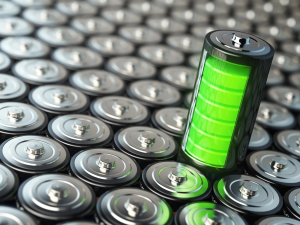The rise of consumer drones has revolutionized industries ranging from aerial photography to delivery services. A critical component of drone functionality is the power source, with lithium-ion batteries emerging as the dominant choice due to their superior performance and efficiency.
This article explores the role of lithium-ion batteries in consumer drones, highlighting their advantages, limitations, and advancements driving the next generation of drone technology.

1. Why Lithium-Ion Batteries for Consumer Drones?
Drones demand a power source that is lightweight, efficient, and capable of delivering high energy output. Lithium-ion batteries meet these requirements through several key attributes:
High Energy Density
Lithium-ion batteries offer a high energy-to-weight ratio, making them ideal for drones where reducing weight is crucial for extended flight times.
Lightweight Design
Their compact and lightweight nature allows drones to carry additional payloads, such as cameras or sensors, without compromising performance.
Fast Charging
The ability to charge quickly is critical for frequent drone users, such as photographers and surveyors. Lithium-ion technology supports rapid charging compared to older battery types.
Longer Lifespan
Lithium-ion batteries provide a higher number of charge-discharge cycles than traditional batteries, ensuring consistent performance over time.
2. Applications of Lithium-Ion Batteries in Consumer Drones
Lithium-ion batteries are integral to powering drones across a range of consumer applications:
Aerial Photography and Videography
Professional and hobbyist photographers rely on drones with lithium-ion batteries for stable, high-quality shots during extended flights.
Recreational Drones
Enthusiasts benefit from the lightweight and efficient power of lithium-ion batteries, enabling longer flight durations and maneuverability.
Surveying and Mapping
Drones equipped with lithium-ion batteries are commonly used in construction and agriculture for mapping large areas without frequent recharges.
Delivery Services
Emerging delivery applications, such as last-mile package delivery, utilize lithium-ion batteries for their ability to sustain longer operational times.
Racing Drones
In competitive drone racing, the lightweight and high-output nature of lithium-ion batteries is essential for achieving top speeds and agile movements.
3. Advantages of Lithium-Ion Batteries in Drones
Extended Flight Times
Lithium-ion batteries offer longer flight durations, allowing drones to operate efficiently for tasks that require sustained aerial coverage.
High Discharge Rates
The technology provides consistent power output, which is crucial for maintaining stability and responsiveness during complex drone maneuvers.
Versatility
Lithium-ion batteries are available in various capacities and configurations, catering to diverse drone sizes and applications.
Environmental Resilience
Many lithium-ion batteries perform well in varying temperatures, ensuring drones can operate in different environmental conditions.
4. Challenges of Lithium-Ion Batteries in Consumer Drones
Despite their benefits, lithium-ion batteries present challenges that manufacturers and users must address:
Limited Flight Time
While flight durations have improved, drones powered by lithium-ion batteries still face limits, typically ranging between 20 and 40 minutes per charge.
Sensitivity to Damage
Lithium-ion batteries are prone to damage from physical impact, overcharging, or deep discharging, which can lead to safety concerns.
Cost
The advanced technology used in lithium-ion batteries makes them more expensive than traditional alternatives, increasing the overall cost of drones.
Environmental Concerns
Improper disposal of lithium-ion batteries can pose environmental risks, emphasizing the need for effective recycling programs.
5. Advancements in Lithium-Ion Battery Technology for Drones
Ongoing research and development efforts are addressing the limitations of lithium-ion batteries, paving the way for next-generation drone performance:
Increased Energy Density
Researchers are exploring ways to increase energy density, enabling drones to achieve longer flight times without increasing battery weight.
Faster Charging
Innovations in charging technology are reducing recharge times, enhancing convenience for users who rely on drones for frequent tasks.
Improved Safety Features
Manufacturers are integrating advanced safety mechanisms, such as thermal management systems and protective casings, to prevent overheating and battery failure.
Smart Battery Systems
Modern drones incorporate smart batteries with built-in sensors and communication systems to provide real-time data on charge levels, temperature, and overall health.
6. Alternatives to Lithium-Ion Batteries
While lithium-ion batteries dominate the consumer drone market, alternative technologies are gaining attention for their unique advantages:
Lithium-Polymer (LiPo) Batteries
LiPo batteries offer higher discharge rates and lighter designs, making them popular for racing drones and high-performance models. However, they are more delicate and require careful handling.
Solid-State Batteries
Emerging solid-state technology promises greater safety, energy density, and lifespan, although it is not yet widely available for consumer drones.
Hydrogen Fuel Cells
Fuel cells are being explored for drones requiring exceptionally long flight times, though they are currently more expensive and less practical for consumer use.
7. Maintenance Tips for Lithium-Ion Drone Batteries
To maximize the lifespan and performance of lithium-ion batteries, users should follow best practices:
Avoid Overcharging and Deep Discharging
Overcharging or completely depleting the battery can reduce its capacity and longevity. Use a charger with built-in safeguards to prevent these issues.
Store Properly
Store batteries in a cool, dry place and at a partial charge (around 40–60%) if not in use for an extended period.
Inspect Regularly
Check for swelling, leaks, or physical damage before and after each use. Damaged batteries should be replaced immediately.
Keep Batteries Clean
Clean terminals with a dry cloth to ensure optimal conductivity and prevent power delivery issues.
Use Recommended Chargers
Only use chargers designed for your drone’s battery type to avoid compatibility issues and potential damage.
8. Future of Lithium-Ion Batteries in Drones
As drone technology advances, so too will the capabilities of lithium-ion batteries. Key trends include:
Integration with AI
AI-driven battery management systems will optimize power usage, extending flight times and improving overall efficiency.
Modular Designs
Swappable battery modules will allow users to quickly replace depleted batteries, reducing downtime during operations.
Sustainable Solutions
Efforts to improve recycling processes and develop eco-friendly materials will address environmental concerns associated with lithium-ion batteries.
Conclusion
Lithium-ion batteries have revolutionized the performance and versatility of consumer drones, enabling their widespread adoption in diverse applications. Despite challenges like limited flight time and environmental considerations, ongoing advancements in battery technology promise to overcome these obstacles.
As drones continue to evolve, lithium-ion batteries will remain a cornerstone of their functionality, empowering users to explore new possibilities in aerial innovation.

